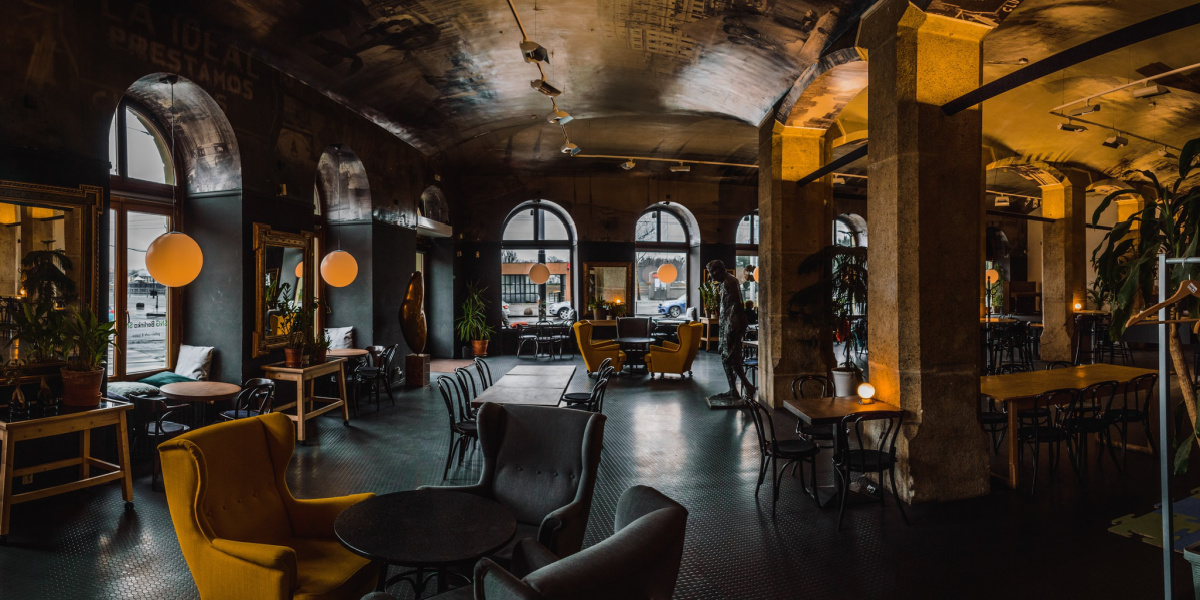The Pandemic Restaurant
3 Min Read By Ewald Damen
After many months of home cooking and mixed success with baking experiments, most of us are really looking forward to meeting up with a group of friends for a tasty meal in a restaurant. Having been deprived of these types of social gatherings – and similarly a romantic candlelit dinner for two – even allowing for the requisite Covid restrictions, returning to restaurant dining holds huge appeal for many.
But the question remains, how do eating establishments respond to the “new way” of eating out, as we must adapt to a world where the Covid strain will most likely never fully disappear from our lives? Add to this that some people have become much more conscious of contact, space and hygiene – adding a new layer to the restaurant experience.
When it comes to restaurant design, Covid’s impact is probably broader than just how we plan our dining places, it will also have affected how we design them and what materials we use.
While some people will revert to life as normal as soon as they can, all the indications are that there might be other groups less keen. It is this latter group who will want to see adjustment and consideration in the way a restaurant operates, which will inevitably affect how the interior might work while retaining some of the principles introduced for Covid protection.
Hopefully, we won’t be sitting between hastily bought plastic screens, resembling a shower curtain; but restaurants might need to provide customers with added protection between seating. The more aesthetically pleasing version of this would be planning a more spacious layout allowing better for natural separation that accommodates clear and adequate circulation without the eyesores.
The communal table and bar eating might need a slight rethink, or at least some gaps between groups. Since the pandemic started, most new restaurant projects have incorporated flexibility to deal with Covid through minimised capacity, but with the ability to return to denser dining and increase the number of covers when public health allows.
When it comes to restaurant design, Covid’s impact is probably broader than just how we plan our dining places, it will also have affected how we design them and what materials we use. With hygiene now even higher up the agenda, cleanliness will not only affect the choice of materials, but a simpler, less cluttered design, will give an overall look of a cleaner and fresher approach to styling.
Restaurants must be clever in their design and think more about how people use the space and how they can easily adapt to different group sizes.
Not that I think restaurants will start to look like sterile school canteens – one of the main reasons to go out for a meal is to enjoy the ambience that accompanies the tasty cuisine. Restaurants must be clever in their design and think more about how people use the space and how they can easily adapt to different group sizes. Thoughtful waiting areas for guests and managing a good customer flow will need some careful consideration. In particular, smaller establishments will need to really think about how they can operate safely for the wellbeing of their clientele and staff.
I believe that some form of the “Covid thinking” is here to stay in hospitality with restaurants conscious that at any point they may have to rapidly respond to new virus strains and associated government regulations and restrictions. Although restaurants have quickly adapted to implement a different approach with minimal impact on the overall experience, going forward innovative and creative solutions should be embedded into the design so they feel like a natural progression rather than a quick fix, added layer of screens and hand sanitisers. Exploring new ideas to deal with guest and staff safety should be a natural evolution.
Unfortunately, many restaurants have not survived the lengthy lockdowns, often those that survived did so by cleverly changing their model temporarily to take away service, home meal kits, or a grocery and deli model, ensuring they were still able to provide their beloved clientele with their produce.
Hopefully, the sector and its designers will keep responding with new ideas as needed and that this innovative mindset can stimulate the industry. But first we will simply enjoy the much-missed conviviality of a delicious meal in an enjoyable setting – hopefully all delivered with imperceptible safety.


